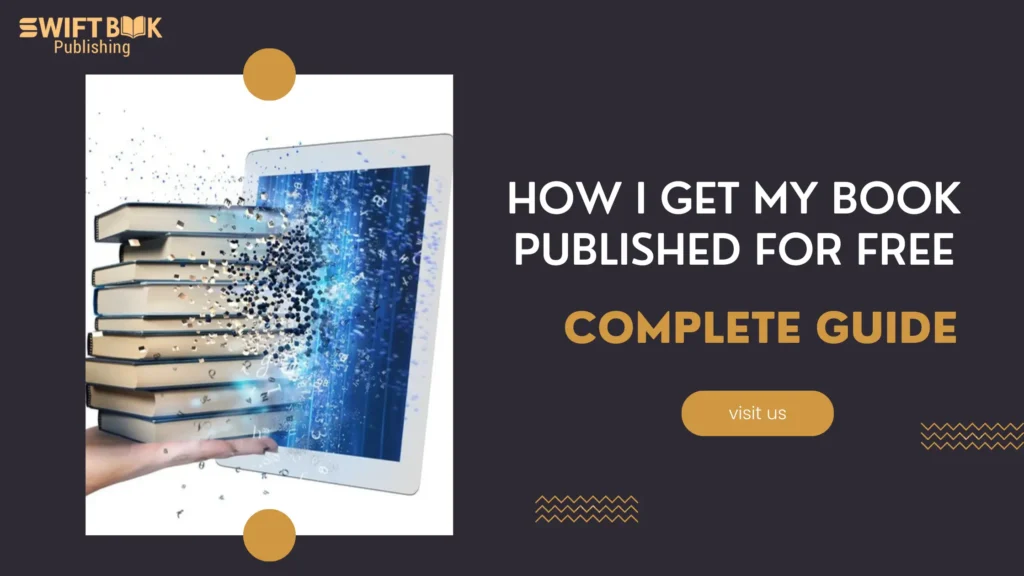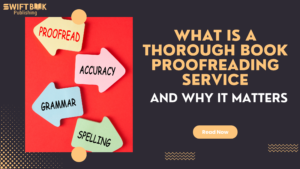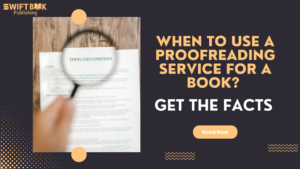Publishing a book has always been a dream of mine, but the potential costs often held me back. I constantly wondered, “How can I get my book published for free?” After much research and exploration, I discovered that it’s entirely possible to publish a book without spending any money. In this guide, I’ll share my journey and the strategies I used to get my book published for free. Whether you’re looking into traditional publishing, self book publishers, or other methods, these insights might help you achieve your dream too.
The Basics of Free Book Publishing
Before diving into the specifics, it’s crucial to understand the landscape of book publishing. From my experience, there are two main routes you can take:
Traditional Publishing: This is often the go-to for many authors. It involves submitting your manuscript to a publisher who takes on the financial responsibility for editing, designing, printing, and distributing your book. If you’re accepted, you won’t have to pay anything upfront, though the publisher will take a percentage of your royalties.
Self-Publishing: This method puts you in charge of the publishing process. While many self-publishing platforms charge fees, I found ways to publish my book for free, which I’ll delve into shortly.
Related Blog: What is Book Publishing: An Overview of the Industry Process
How Traditional Publishing Worked for Me as a No-Cost Route
Traditional publishing always seemed like the ideal path because the publisher covers all costs. Here’s how I secured a traditional publishing deal without spending a penny:
Writing a compelling query letter
Crafting a query letter felt like a daunting task, but it was essential. I had to pitch my book to literary agents and publishers in a way that was both concise and captivating. After a few drafts, I had a query letter that highlighted the essence of my book and caught the attention of several agents.
Finding a literary agent
Many traditional publishers require submissions to come through a literary agent. I reached out to several agents, and one finally agreed to represent me. Since agents work on commission, I didn’t pay anything upfront. My agent helped refine my manuscript and pitched it to publishers, eventually landing me a deal where the publisher covered all the costs.
Submitting directly to free book publishing companies
For those who prefer not to work with an agent, some publishers accept unsolicited manuscripts. During my research, I found that small presses and free book publishing companies are more likely to consider these. Following submission guidelines meticulously is crucial, as I learned through trial and error.
Participating in writing contests
I also explored writing contests, many of which offer publishing deals as prizes. While I didn’t win, I did place in a few contests, which attracted the attention of publishers and agents. This gave me another potential pathway to get my book published for free.
How I Used Self-Publishing to Publish My Book for Free
While traditional publishing has its benefits, it wasn’t my only option. I also explored self-publishing as a way to get my book out there without spending money. Here’s what worked for me:
Utilizing free self-publishing platforms
There are several platforms that allow you to publish your book without any upfront costs. Here are a few that I used:
- Amazon Kindle Direct Publishing (KDP): This platform allowed me to publish my ebook and print-on-demand paperback for free. Amazon takes a cut of the sales, but I didn’t have to pay anything to get started. It’s one of the leading free ebook publishers, and it worked perfectly for me.
- Smashwords: This platform distributes your book to multiple retailers, including Apple Books, Barnes & Noble, and Kobo. It’s a fantastic option for free book publishing in ebook format, and I took full advantage of it.
- Draft2Digital: Similar to Smashwords, Draft2Digital offers free ebook publishing and distribution services. It helped me reach a wider audience without any upfront fees.
Crowdfunding My Publishing Costs
To cover costs associated with editing, design, or marketing, I turned to crowdfunding platforms like Kickstarter. I offered rewards like signed copies and exclusive content to backers in exchange for their support. This approach helped me raise the funds I needed without spending my own money.
Getting Free ISBNs and Barcodes
In the U.S., ISBNs are typically purchased through Bowker, but I found that you can obtain a free ISBN if you publish through platforms like Amazon KDP or Smashwords. These platforms also generate a barcode for your book, which saved me additional costs.
Designing My Own Cover and Formatting My Book
To save on design costs, I used free tools like Canva for cover design and Kindle Create for formatting. These tools were user-friendly and helped me create a professional-looking book without spending anything.
Leveraging Free Marketing Channels
Once my book was published, I needed to promote it. Here’s how I marketed my book for free:
Social Media: I used platforms like Twitter, Instagram, and Facebook to build a following and promote my book. Engaging with readers on these platforms helped me create a buzz without any marketing budget.
Author Website: I created a free website using WordPress, where I showcased my work and connected with readers. This online presence was crucial in promoting my book.
Book Bloggers and Reviewers: I reached out to book bloggers and reviewers who were interested in reading and promoting my book. Their reviews helped increase my book’s visibility.
Goodreads Giveaways: Running a free giveaway on Goodreads was another strategy that increased my book’s visibility and attracted more readers.
Leveraging Open Access Publishing for Free Distribution
Open access publishing was another avenue I explored to make my book freely available online. This model is particularly popular in academic publishing but is becoming more common in fiction and non-fiction as well.
Understanding Open Access: Open access means that my book is freely available to readers online. I retained the copyright and controlled how my book was used and distributed. This model was ideal for me because my primary goal was to reach a wide audience rather than make money from sales.
Where I Published Open Access
- Project Gutenberg: This platform hosts public domain and open access books. I found it to be a good option for reaching readers interested in free literature.
- Lulu: Lulu offers free book publishing services with the option to distribute your book under an open access license. I used it to reach an even broader audience.
- Public Domain and Creative Commons Licenses: Licensing my work under a Creative Commons license allowed others to share and distribute my book freely, while still giving me credit.
Related Blog: What is The Process of Publishing a Book
The Role of Non-Profit and Indie Presses in My Journey
Non-profit and independent presses often have missions aligned with making literature accessible. I found that they offer free book publishing services to authors whose work fits their vision.
Researching Indie Presses: Many indie presses are open to new and experimental voices. While they may not offer large advances, they often cover all publishing costs. This was an excellent choice for me, as it allowed me to maintain creative control over my work while getting it published for free.
Applying for Grants and Fellowships: I also explored grants and fellowships offered by non-profits and literary organizations. These opportunities provided funding for editing, design, and marketing while allowing me to retain control over my book.
Strategic Partnerships and Sponsorships That Helped Me
Another strategy I explored was securing a partnership or sponsorship to cover my publishing costs.
Corporate Sponsorships: If your book aligns with a company’s brand or mission, they may be willing to sponsor your publishing costs. While I didn’t secure a corporate sponsorship, I did research companies that might be interested in this type of collaboration.
Partnerships with Influencers: Collaborating with influencers in my niche helped me promote my book. While I didn’t partner with any influencers for this project, I learned that they could help you publish and promote your book in exchange for co-authorship, a share of the royalties, or other creative arrangements.
Avoiding Common Pitfalls in Free Book Publishing
While it’s possible to publish your book for free, it’s important to be aware of potential pitfalls:
Beware of Vanity Presses: Vanity presses charge authors for publishing services and often promise much but deliver little. I made sure to thoroughly research any company offering to publish my book for free to ensure they were reputable.
Quality Control: Publishing for free, especially through self-publishing, can sometimes lead to quality control issues. I invested time in editing, design, and formatting to ensure my book was as professional as possible.
Marketing Challenges: Free publishing often means you’ll need to handle your own marketing. Without a budget, this can be challenging. I was prepared to invest significant time and effort into promoting my book.
Leveraging Free Online Resources and Communities
Throughout my journey, I tapped into free online resources and communities that were invaluable in helping me publish my book for free. Here’s how I used these tools and networks to support my publishing efforts:
Joining Writing and Publishing Forums
Online forums and communities are excellent places to connect with other authors, share experiences, and gain insights. I found these to be particularly helpful:
- Absolute Write: A forum where writers of all levels discuss publishing and marketing strategies.
- Writers’ Cafe on Kboards: A community for Kindle authors to exchange tips and support.
- Reddit’s r/writing and r/selfpublish: Subreddits dedicated to writing and self-publishing, where I asked questions and received advice from experienced authors.
Utilizing Free Educational Webinars and Workshops
I attended several free webinars and workshops on various aspects of book publishing. These sessions provided valuable information on everything from manuscript preparation to marketing strategies. Many of these resources were offered by reputable publishing organizations and online platforms.
Accessing Free Templates and Tools The internet is full of free templates and tools for authors. Here are a few that I used:
- Canva: Canva is used for creating book covers and promotional materials.
- Google Docs: For writing and editing my manuscript, with the added benefit of real-time collaboration with beta readers.
- Scrivener Free Trial: Although not entirely free, Scrivener offers a generous trial period that allowed me to organize and draft my manuscript.
Collaborating with Other Authors
I connected with other authors through social media and online communities. By collaborating on cross-promotions, blog tours, and joint giveaways, I was able to reach a wider audience without spending any money.
Final Thoughts: How You Can Get Your Book Published for Free
Publishing a book for free is entirely possible, but it requires careful planning, research, and effort. Whether you choose traditional publishing, self-publishing, or a combination of both, there are numerous ways to get your book into readers’ hands without spending money.
In my journey, I discovered that while the process is challenging, it’s also incredibly rewarding. I hope that by sharing my experiences, I can help other aspiring authors navigate their own paths to free book publishing.
If you’re serious about getting your book published for free, take advantage of the many resources, platforms, and strategies available. With perseverance and creativity, you can achieve your publishing goals without breaking the bank.







